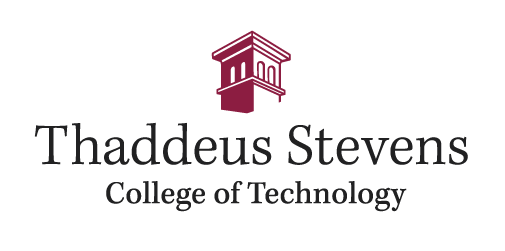Closing 'the Skills Gap': How CTCs Meet Student and Workforce Needs

Todd Taylor keeps being called a liar.
It happens often when Taylor, the director of
“We have many more employers looking to hire our graduates …
Then there are these numbers: Money magazine says it takes the average college grad three to nine months to find a job; a Monster TRAK survey of grads found about half moved back home after graduation; government data show nearly 7 million Americans are out of work and looking for a job.
So why are employers lining up to hire students from technical schools like CPI? It’s a phenomenon known as the “Skills Gap.”
“It is absolutely real,” Taylor says.
The Skills Gap is a misalignment between education and economy, and it is renewing the need for career-driven education programs that prepare students for emerging careers and address workforce shortages. Pennsylvania Career and Technology Centers (CTCs) are ready to fill the void, and they’re working closely with employers across the Commonwealth to keep their programs on the cutting edge of science, technology, engineering and math (STEM).
The Skills Gap
Estimates vary as to how big the skills gap really is, and there is no agreement on who or what is exactly to blame. But for some businesses, it’s a daily challenge. For example, a report by the Manufacturing Institute predicts that nearly 3.5 million US manufacturing jobs will open up over the next decade, but the skills gap will result in 2 million of those jobs going unfilled.
The Business Roundtable says companies are having a difficult time filling jobs that require specialized skills, but not necessarily a traditional four-year degree, such as welders, energy and computer technicians, mechanics and tool and
That’s why two-year technical degree earners are beginning to outpace annual earnings of many four-year graduates, according to Kevin Fleming, a national advocate of career and technical education (CTE).
“The STEM jobs currently needed nationally require hands-on technical skills, contextualized general education understanding, and industry credentials,” explains Fleming, dean of instruction for career and technical education programs at Norco College, Calif. “We are producing many college graduates, but too few possess the employability, technical, and professional skills STEM employers are seeking.”
School districts could do a better job of tracking these education and employment outcomes after high school, too, argues Robert Mauro, a former superintendent, high school
Mauro conducted studies of based on graduates of three high schools, Jim Thorpe, Panther Valley and Wallenpaupack, as well as the Carbon Career and Technical Institute. His findings suggest that the data most districts use to track postsecondary plans—the “senior survey” completed before graduation—may not be accurate.
“It’s not enough for you to be saying 88 percent of
In his research, conducted a year after students graduated, found less than half the students who said they were going
Mauro fears
These graduates may make up a growing portion of the Skills Gap.
State of CTE
Kevin Fleming says career and technical education is the best mechanism for shrinking the skills gap nationwide because they “directly address local/regional labor shortages and prepare students for emerging careers.”
That’s why so many employers are recruiting heavily at CPI and other CTCs in Pennsylvania.
“The state of CTE in Pennsylvania is strong,” says Lee Burket, director of the Bureau of Career and Technical Education at the PA Department of Education. “Locally, (CTCs) have been revising their curriculum and changing their instructional methods to ensure students are both academically and technically prepared” for work after school.
Enrollment in K-12 CTE programs statewide has increased every year since 2012, up to nearly 68,000 statewide in 2015-2016, the last year state data is available.
Burket says the bureau works with the Department of Labor and Industry to make sure the programs at CTCs across the commonwealth align to the Pennsylvania In-Demand Occupations List (PA IDOL), which L&I updates every year (see sidebar).
PDE requires CTCs to have two advisory committees: a local advisory committee, which guides the school to meet the needs of the economic region they serve, and an occupational advisory committee, which evaluates individual programs.
“The curriculum itself can be nimble,” Burket says. “If an employer says we’re missing out on this new concept, we need to make sure our graduates are prepared, we can change the curriculum.”
Todd Taylor, of CPI, says the advisory committees are an excellent tool.
“We take it very seriously to get the right people on those committees,” he points out. “They make sure we’re teaching the right things.”
Industry Partnerships
As the competition for skilled workers heats up, employers are deepening partnerships with CTCs and other technical schools to help fill the pipeline.
“You’re going to have to go further than just, ‘I want to hire your graduates,’” Taylor advises. “Let’s talk about upscaling your own folks, let’s work together on curriculum, help us with recruiting.”
CPI works with employers to develop assessments that screen workers—both new and existing employees—for skills they need to develop to meet the company’s needs. They can then design
“They may not have exactly what they need, but they have other intangibles, so let’s get them what they need,” Taylor says. For example, CPI collaborated with Cleveland Brothers on an associate degree program in gas compression for employees in the Marcellus Shale region and all over the world.
Thaddeus Stevens College of Technology, a two-year technical college in Lancaster, provides a unique model for involving industry in nearly all phases of the education process, according to college president William Griscom.
The college’s industry advisory committees—one for each of its 23 technical majors—are chaired, managed and run by industry pros. Members assist in recruiting students to the college, mentor students in the classroom and offer job shadowing and mock interviews as students prepare to graduate. Companies donate to scholarship funds and sponsorships. And they offer hundreds of paid summer internships per year with average wages of $13/hour or more.
The key to maintain strong programs, Griscom says, is the critical participation of employers in providing employment data on the college’s graduates. The college surveys alumni one year after commencement and again after five years. Response rates are usually 85 percent
“Our industry partners have helped us create an assessment culture at the college which is unique,” Griscom says. “When our graduates leave here they will continue to provide critical employment data to the college so we can make decisions based on real data and real numbers. And industry drives that.”
The result? The college averages 6.6 job opportunities per graduate, and as many as 10 or 15 job opportunities for grads of the construction and manufacturing divisions, respectively.
That’s a model school boards could implement in K-12, Robert Mauro believes—especially CTE programs.
He says school directors should be asking grads if the school had high standards, demanded quality work of them and provided proper guidance as they explored career options.
Schools “have a responsibility to be providing the very best program that they can,” he says, “and help students to make their way.”
Find the article in the Pennsylvania School Boards Association Bulletin (
Adam Aurand is the Director of Marketing at Thaddeus Stevens College of Technology.

